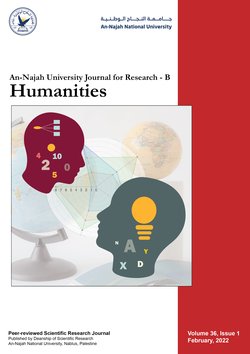Gethsemane at Jerusalem in the Memoirs of Foreign Pilgrims and Travelers until the Beginning of the Twentieth Century
Authors:
Article info
2023-07-02
2023-10-15
2024-07-01
1259 - 1274
Keywords
- Judas Iscariot
- olive trees
- Gethsemane
- Jesus
- Church of the Sepulcher of Saint Mary
- Jerusalem
- Rock of Passion
Abstract
The study aims to shed light on the site of Gethsemane, located at the bottom of the western foot of the Mount of Olives in the city of Jerusalem, through the memoirs of foreign pilgrims and travelers, from the fourth century AD until the beginning of the twentieth century. The site derives its religious and historical importance from its association with the suffering of Jesus, from the Last Supper until his arrest by the Romans following the betrayal of Judas Iscariot, and then his taking to the High Priest of the Jews in Jerusalem in the year 33 AD. All of this was considered one of the pivotal stations in the history of Christian traditions in Palestine. The writings of pilgrims and travelers included mentioning the geography of Gethsemane, its natural and religious monuments, and the rituals that were practiced there. Like all other religious sites in the city of Jerusalem, it still maintains its status and sanctity, for both Christians and Muslims, as one of the Palestinian cultural heritage sites, which requires preserving it, protecting it, and sparing it from all kinds of attacks, especially those resulting from the Judaization policy.
Al-Qobbaj, A., & Hijab, H. (2024). Gethsemane at Jerusalem in the Memoirs of Foreign Pilgrims and Travelers until the Beginning of the Twentieth Century. An-Najah University Journal for Research - B (Humanities), 38(7), 1259–1274. https://doi.org/10.35552/0247.38.7.2232
[1]A. Al-Qobbaj and H. Hijab, “Gethsemane at Jerusalem in the Memoirs of Foreign Pilgrims and Travelers until the Beginning of the Twentieth Century,” An-Najah University Journal for Research - B (Humanities), vol. 38, no. 7, pp. 1259–1274, Jul. 2024, doi: 10.35552/0247.38.7.2232.
Al-Qobbaj, Amer, and Haneen Hijab. “Gethsemane at Jerusalem in the Memoirs of Foreign Pilgrims and Travelers until the Beginning of the Twentieth Century.” An-Najah University Journal for Research - B (Humanities), vol. 38, no. 7, July 2024, pp. 1259–74. Crossref, https://doi.org/10.35552/0247.38.7.2232.
1.Al-Qobbaj A, Hijab H. Gethsemane at Jerusalem in the Memoirs of Foreign Pilgrims and Travelers until the Beginning of the Twentieth Century. An-Najah University Journal for Research - B (Humanities) [Internet]. 2024 Jul;38(7):1259–74. Available from: http://dx.doi.org/10.35552/0247.38.7.2232
Al-Qobbaj, Amer, and Haneen Hijab. “Gethsemane at Jerusalem in the Memoirs of Foreign Pilgrims and Travelers until the Beginning of the Twentieth Century.” An-Najah University Journal for Research - B (Humanities) 38, no. 7 (July 2024): 1259–74. https://doi.org/10.35552/0247.38.7.2232.
جثسيماني في القدس في مذكرات الحجاج والرحالة الأجانب حتى مطلع القرن العشرين
المؤلفون:
معلومات المقال
2023-07-02
2023-10-15
2024-07-01
1259 - 1274
الكلمات الإفتتاحية
- Judas Iscariot
- olive trees
- Gethsemane
- Jesus
- Church of the Sepulcher of Saint Mary
- Jerusalem
- Rock of Passion
الملخص
تهدف هذه الدراسة إلى تسليط الضوء على موقع جثسيماني الواقع أسفل السفح الغربي لجبل الزيتون في القدس، من خلال مذكرات الحجاج والرحالة الأجانب، منذ القرن الرابع الميلادي حتى مطلع القرن العشرين، وتكمن أهميته الدينية والتاريخية في ارتباطه بمحنة السيد المسيح وآلامه ما بين العشاء الأخير حتى قيام الجنود الرومان بإلقاء القبض عليه إثر خيانة يهوذا الإسخريوطي، واقتياده إلى رئيس كهنة اليهود في القدس عام 33م، وعُدَّ ذلك كله من المحطات المفصلية في تاريخ التقاليد المسيحية في فلسطين. اشتملت كتابات الحجاج والرحالة على ذكر جغرافية موقع جثسيماني ومعالمه الطبيعية والدينية والطقوس التي مورست فيه. ولا يزال، كسائر المواقع الدينية في مدينة القدس، محافظاً على مكانته وقدسيته، لدى كل من المسيحيين والمسلمين، كأحد مواقع التراث الثقافي الفلسطيني، ما يجعل من الأهمية بمكان الحفاظ عليه وحمايته وتجنيبه مختلف أنواع الاعتداءات الناتجة عن سياسة التهويد.
Al-Qobbaj, A., & Hijab, H. (2024). Gethsemane at Jerusalem in the Memoirs of Foreign Pilgrims and Travelers until the Beginning of the Twentieth Century. An-Najah University Journal for Research - B (Humanities), 38(7), 1259–1274. https://doi.org/10.35552/0247.38.7.2232
[1]A. Al-Qobbaj and H. Hijab, “Gethsemane at Jerusalem in the Memoirs of Foreign Pilgrims and Travelers until the Beginning of the Twentieth Century,” An-Najah University Journal for Research - B (Humanities), vol. 38, no. 7, pp. 1259–1274, Jul. 2024, doi: 10.35552/0247.38.7.2232.
Al-Qobbaj, Amer, and Haneen Hijab. “Gethsemane at Jerusalem in the Memoirs of Foreign Pilgrims and Travelers until the Beginning of the Twentieth Century.” An-Najah University Journal for Research - B (Humanities), vol. 38, no. 7, July 2024, pp. 1259–74. Crossref, https://doi.org/10.35552/0247.38.7.2232.
1.Al-Qobbaj A, Hijab H. Gethsemane at Jerusalem in the Memoirs of Foreign Pilgrims and Travelers until the Beginning of the Twentieth Century. An-Najah University Journal for Research - B (Humanities) [Internet]. 2024 Jul;38(7):1259–74. Available from: http://dx.doi.org/10.35552/0247.38.7.2232
Al-Qobbaj, Amer, and Haneen Hijab. “Gethsemane at Jerusalem in the Memoirs of Foreign Pilgrims and Travelers until the Beginning of the Twentieth Century.” An-Najah University Journal for Research - B (Humanities) 38, no. 7 (July 2024): 1259–74. https://doi.org/10.35552/0247.38.7.2232.

Since 2019
Cite Score (Scopus): 0.5
Time to First Decision: 7 Days
Submission to Acceptance: 60 Days
Acceptance to Publication: 10 Days
Acceptance Rate: 20%
Call for Papers:
Special Issue on
Innovative Assessment in the Age of AI: Strategies for Quality
Why should you
Publish With Us?
An-Najah National University
Nablus, Palestine
Nablus, Palestine
- P.O. Box
- 7, 707
- Fax
- (970)(9)2345982
- Tel.
- (970)(9)2345560
- (970)(9)2345113/5/6/7-Ext. 2628
- [email protected]
- EIC
- Prof. Waleed Sweileh
An-Najah University Journal for Research - B (Humanities) © 1986 by An-Najah University, Nablus, Palestine is licensed under CC BY-NC 4.0
